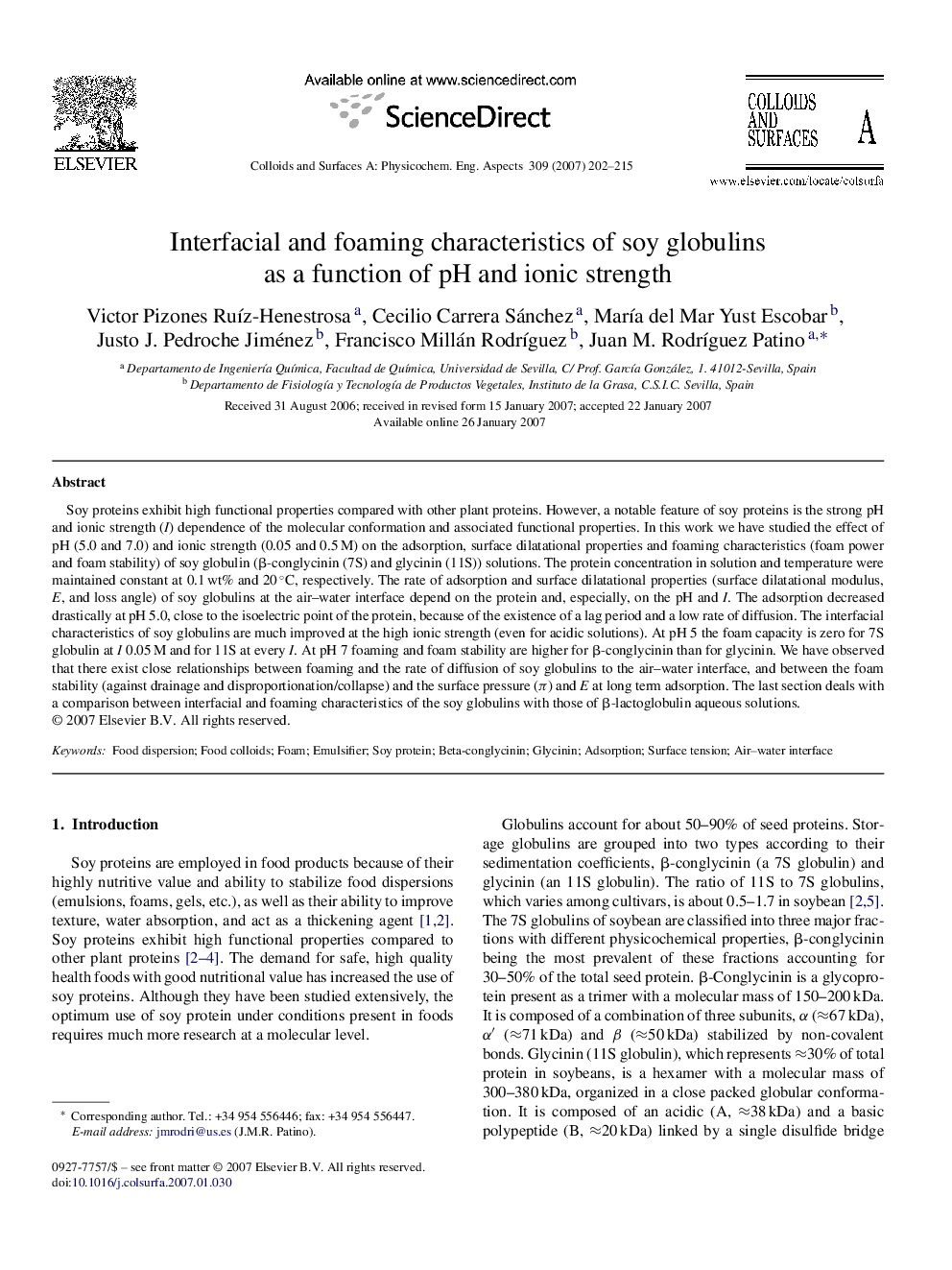| Article ID | Journal | Published Year | Pages | File Type |
|---|---|---|---|---|
| 597297 | Colloids and Surfaces A: Physicochemical and Engineering Aspects | 2007 | 14 Pages |
Soy proteins exhibit high functional properties compared with other plant proteins. However, a notable feature of soy proteins is the strong pH and ionic strength (I) dependence of the molecular conformation and associated functional properties. In this work we have studied the effect of pH (5.0 and 7.0) and ionic strength (0.05 and 0.5 M) on the adsorption, surface dilatational properties and foaming characteristics (foam power and foam stability) of soy globulin (β-conglycinin (7S) and glycinin (11S)) solutions. The protein concentration in solution and temperature were maintained constant at 0.1 wt% and 20 °C, respectively. The rate of adsorption and surface dilatational properties (surface dilatational modulus, E, and loss angle) of soy globulins at the air–water interface depend on the protein and, especially, on the pH and I. The adsorption decreased drastically at pH 5.0, close to the isoelectric point of the protein, because of the existence of a lag period and a low rate of diffusion. The interfacial characteristics of soy globulins are much improved at the high ionic strength (even for acidic solutions). At pH 5 the foam capacity is zero for 7S globulin at I 0.05 M and for 11S at every I. At pH 7 foaming and foam stability are higher for β-conglycinin than for glycinin. We have observed that there exist close relationships between foaming and the rate of diffusion of soy globulins to the air–water interface, and between the foam stability (against drainage and disproportionation/collapse) and the surface pressure (π) and E at long term adsorption. The last section deals with a comparison between interfacial and foaming characteristics of the soy globulins with those of β-lactoglobulin aqueous solutions.
